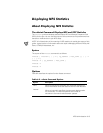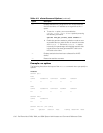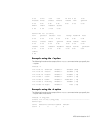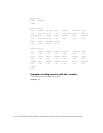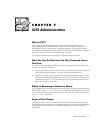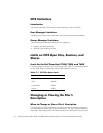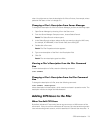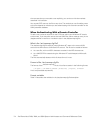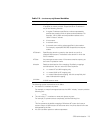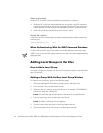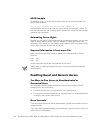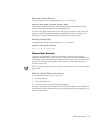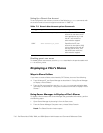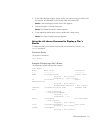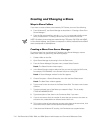
CIFS Administration 7-5
7DEOH
/etc/usermap.cfg
)RUPDW9DULDEOHV
The following symbol conventions are in effect:
An asterisk (*) matches any name.
For example, to map all unmapped users to the UNIX nobody account, add the
following line:
* nobody
The null string () matches no name and rejects any user.
For example, to prevent access completely, add the following line:
* ""
This line prevents the default mapping of Windows NT users who have an
account map to a UNIX account of the same name. Any lines after this line are
disregarded by the filer.
You can use either spaces or tabs as separators.
9DULDEOH 'HVFULSWLRQ
IP-qual
An IP qualifier that the filer uses in matching a user. You use an
IP qualifier to narrow a match.
IP-qual
can be an IP address in
any of the following formats:
A regular IP address specified as numbers separated by
periods (dot notation) with an optional subnet address. For
example, 192.4.1.0/24 narrows possible matches to the
192.4.1.0 class C subnet.
A host name.
A network name.
A network name with a subnet specified in dot notation.
For example, corpnet/255.255.255.0 specifies the corpnet
subnet.
NT-domain
Specifies the domain to match or the domain to use for a
mapped UNIX account. The default is the domain in which the
filer is installed.
NTUser
Any user-type account name. If the name contains a space, put
the name in quotation marks.
direction
Restricts the direction of the mapping. By default, mappings
are bidirectional. You can use one of three symbols:
=> means NT to UNIX mapping only.
<= means UNIX to NT mapping only.
== means bidirectional mapping. Use this to explicitly indi-
cate a bidirectional mapping.
UnixUser
A UNIX account name.



